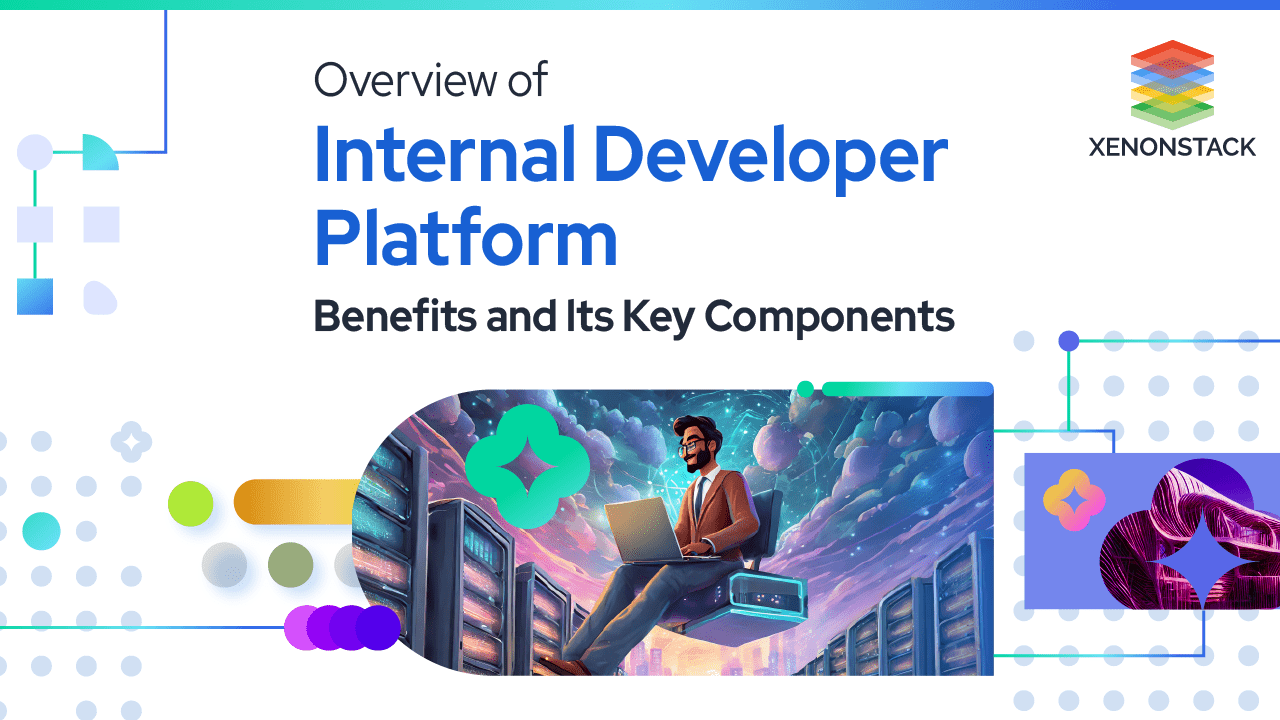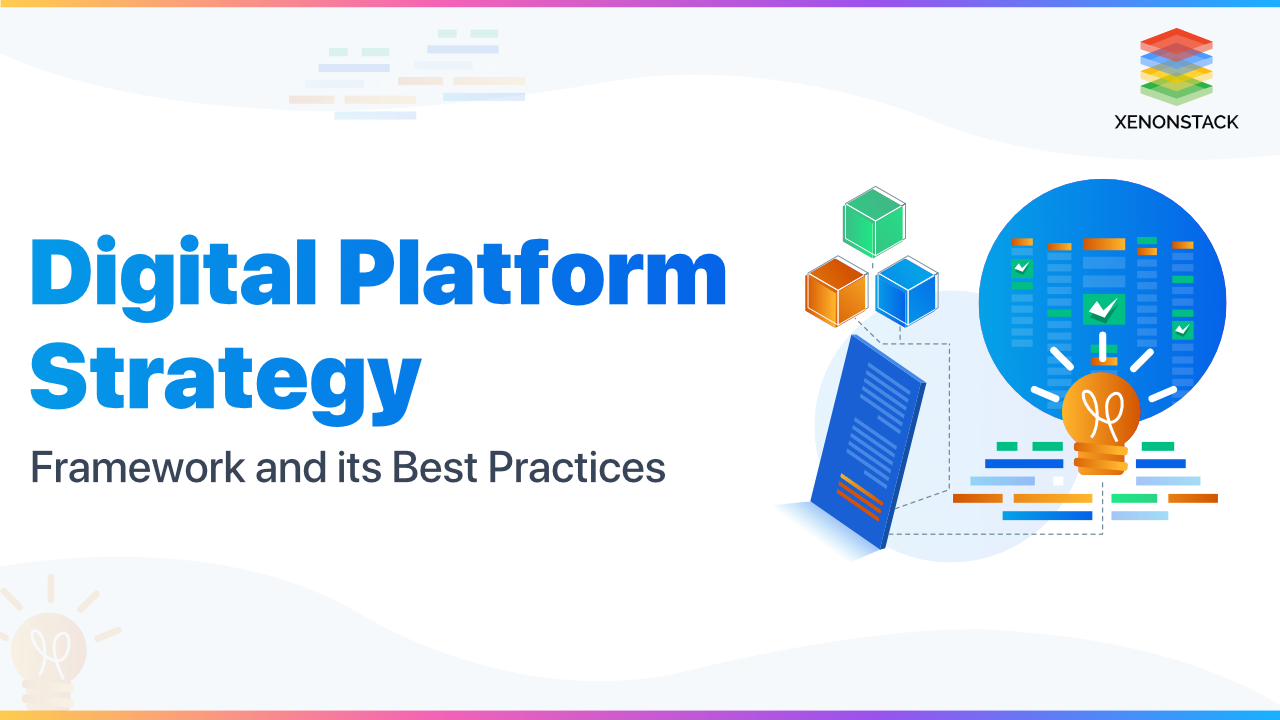
Introduction to Internal Developer Platform
Internal Developer Platform (IDP) is intended to compartmentalize complexity and make life easier for developers and operations teams while improving project quality and performance. What is an Internal Developer Platform, the Components of IDPs, and the advantages to firms that use one? Continue reading to find out.
The rise of cloud computing, DevOps, containerization, and microservice architectures has led to an increased demand for a simple and efficient solution to manage these resources within internal software development teams.In today's world, having a faster time to market is critical to the success of ever-growing businesses. Every consumer now expects their applications to be updated regularly. Internal developer platforms are platforms that elite corporations like Google, Netflix, and Amazon build and use to minimize the operational load on their DevOps teams and provide required abstractions to their software development teams.
What is an Internal Developer Platform?
It’s a Developer Centric Platform that allow developers to engage with their organization's delivery configuration independently, allowing them to self-serve environments, deployments, databases, monitoring and whatever else they need to operate their applications and systems. IDPs are becoming increasingly popular because they assist teams and entire organizations in streamlining processes and communication related to feature development by allowing team members to focus on what matters most to them.
Developers use Internal Developer Platforms that are established by Ops teams with needs of Developers in mind and Organistions Security posture in mind. Traditionally, Ops teams used to define and set up environments for teams which used to be long and error prone process. With the rise of IDP, these requests are available in a Self Service Portal. Developers can define application configuration templates and manage permissions. This allows them to automate regular processes
like spinning up environments and resources and enforce standards to make their setup easier to maintain. Developer teams gain increased control by modifying configurations, deploying, creating fully provisioned environments, and reverting changes. A core Orchestration layer, open-source drivers that the API uses to provide the underlying infrastructure, and a self-service UI and CLI are the three fundamental components of it.
Digital Platforms have become an absolute necessity of any business and no longer a strategy of digital natives.Click to explore about Digital Platform Engineering Services
The critical components of the Internal Developer Platform are listed below.What are the critical components of IDP?
1. Infrastructure Orchestration
Its core component of an IDP. The process of automating the deployment, management, and scaling of infrastructure resources, such as servers, networks, and storage, using software tools and scripts. It involves defining infrastructure configurations in code, often referred to as infrastructure as code (IaC), which allows for consistent and repeatable provisioning of resources. Infrastructure orchestration platforms enable developers and operations teams to define, deploy, and manage complex infrastructure setups efficiently, streamlining processes and reducing manual intervention. IDP Supports Infrastructure orchestration with the help of declarative configuration, version control, and the use of pipelines for automated provisioning and deployment.
2. Role-based Action Management
Access control in an IDP is crucial. It is typically managed through Role-Based Access Control (RBAC). Organizational roles like Member, Machine, Manager, and Admin define permissions. Application-specific roles like Viewer, Contributor, and Owner further tailor access. Environment-level access management is key, allowing restriction of production environment access while enabling development environment creation. Integration with directory services like LDAP is also essential for larger organizations. RBAC in IDP makes RBAC Uniform across organization.
3. Application Configuration Management
Managing application configuration is generally a chaotic process, leading to challenges like versioning issues and lack of self-service options. Internal Developer Platforms offer a standardized solution, which is developed around Git for source code. It addresses challenges by managing resources within and outside container platforms, facilitating versioning through Git, ensuring portability, and providing robust secrets management (through inbuilt and third-party tools). This standardized approach streamlines configuration management, enhancing efficiency and security for developer teams.
4. Deployment Management
With an Internal Developer Platform, developers can focus on coding while automation takes care of the rest. After pushing code to Git, CI pipelines build and test it automatically. The platform deploys the new image to designated environments without developer interaction. It also triggers follow-up actions, like notifying developers or running automated tests. Deployment Management includes debugging support with consolidated logs and comprehensive versioning for audit trails and comparisons between deployments, simplifying operations and enhancing productivity.
5. Environment Management
Environment Management with an Internal Developer Platform streamlines setup, enabling self-service for developers and reducing manual wait times. It allows for easy creation and sunset of environments based on usage, preventing idle resources, and managing costs effectively. Challenges like waiting for environment setup and blocking shared environments are eliminated. The platform connects infrastructure, application configurations, and environments, offering self-service options and different environment types to suit various needs, enhancing developer experience, and speeding up delivery.
6. Observability
The ability to gain insights into the performance, health, and behavior of the platform's components and the applications running on it. Observability is heart and soul of an successful Internal Developer Platform. It involves collecting, aggregating, and analyzing data from various sources such as logs, metrics, traces, and events to provide a comprehensive understanding of the system's behavior. It will help teams to detect, diagnose, and resolve issues quickly, ensuring the reliability, availability, and performance of the platform and the applications it supports.
Advantages of an Internal Developer Platform
Internal Developer Platforms (IDPs) streamline processes, increase productivity, and enhance developer experience by enforcing standardization and enabling self-service. They positively impact key DevOps metrics like mean time to recovery (MTTR) and Change Failure Rate. Qualitatively, IDPs foster ownership and collaboration, boosting creativity and experimentation. Quantitatively, their impact scales with organizational size, reducing wasted hours and improving efficiency, especially in larger enterprises deploying frequently.
How Does it Benefit you?
1. The operations team makes the most efficient technologies and tools; its workload is balanced, pressure is relieved, and all repetitive tasks are automated, resulting in increased team productivity.
2. The development team does not rely on operations; it can manage deployments and environments on its own using pre-configured platform configurations and processes. This improves productivity and visibility while decreasing load and lead time and increasing deployment frequency. It also encourages developers to be innovative and experiment with internal configuration.
3. The company relies on flawless platform processes that have been pre-planned, allowing it to start projects quickly and with less effort.
4. Clients receive their projects faster and at a lower cost; software releases become more stable because the project can begin right away and by relying on the internal platform's out-of-the-box processes and workflows.
Most Popular Internal Developer Platforms
Modern applications of IDP often use cloud-based technology to make the process even more efficient.
There are many different internal developer platforms (IDPs) available, and the most popular ones can vary based on the goals of an organization. Some of the most widely used IDPs include:
1. Amazon Code Catalyst
Amazon Code Catalyst is an integrated service for software development teams adopting continuous integration and deployment practices into their software development process. Code Catalyst puts the tools you need all in one place. You can plan work, collaborate on code, and build, test, and deploy applications with continuous integration/continuous delivery (CI/CD) tools. You can also integrate AWS resources with your projects by connecting your AWS accounts to your Code Catalyst space. By managing all of the stages and aspects of your application lifecycle in one tool, you can deliver software quickly and confidently. If your organization is fully AWS Native, Opting for Code Catalyst is no-brainer. However, Code Catalyst requires you to fully adopt all AWS Services and processes, that includes SCM, CI/CD and IaC using, Code Commit, Code Pipelines and CloudFormation etc.
2. Backstage
It’s an open-source platform developed by Spotify for building developer portals. It serves as a centralized hub for managing and sharing various tools, services, and information within an organization's tech ecosystem. Backstage enables teams to create, discover, and consume internal services, tools, and documentation, streamlining development workflows and enhancing collaboration. It provides features such as service catalogs, documentation hosting, codebase discovery, and plugin extensibility, making it a comprehensive solution for improving developer productivity and facilitating communication within engineering organizations. Since backstage is an open-source component, it provides a lot of flexibility and requires professional guidance to integrate it with your enterprise’s systems.
3. Azure DevOps
Azure DevOps is a set of cloud-based collaboration tools provided by Microsoft to facilitate software development, delivery, and operations processes. It offers a suite of services to manage the entire software development lifecycle, including project planning, version control, continuous integration, and delivery (CI/CD), testing, deployment, and monitoring. It does not fully qualify as IDP as it misses some core components of IDP but by extending Azure DevOps’s capabilities with other tools, Azure DevOps can be used as an IDP.
What are the frequently asked questions?
Below are the FAQs of the internal developer platform
What is an internal developer platform?
These are like snowflakes in that no two are alike. Each platform differs from one organization to the next based on its stack, culture, codebase, and toolset, making it difficult to find an agreed-upon definition. It is a self-service layer that allows developers to interact with their organization's delivery setup independently, self-serve environments, deployments, databases, logs, and anything else they require to run their applications.
What is an open developer platform?
Open platform is a publicly available open standard platform that allows the developer to change existing functionality.
What is the difference between open platforms and open source?
The open platform is a publicly available open standard platform that allows the developer to change existing functionality, Open source is made freely available for possible modification and redistribution of source code.
Future Trends
It is challenging to anticipate the precise future patterns of internal developer platforms (IDPs) due to the potential impact of several factors, such as technological advancements, evolving software development methodologies, and organizational requirements.
However, some potential future trends for IDPs include:
- More integrations with DevOps and Cloud APIs
- Adoption of Everything as a Code
- Integration of AI and ML in IDP
- Greater focus on security and compliance
Summary
Internal Developer Platforms revolutionize the collaboration between Ops and Development teams, fostering a genuine "you build it, you run it" mindset by cultivating a unique ownership culture. By leveraging automation, an IDP minimizes transactional discussions between operations and developers, significantly enhancing the productivity of both teams. Given the remarkable advantages it offers to development and operations teams, numerous prominent organizations have embraced Internal Developer Platforms as an integral part of their workflow.
Next Steps Towards Leveraging IDP benefits
To fully capitalize on IDP benefits, prioritize strategic goal-setting, invest in skill-building, monitor key metrics, and refine processes to ensure continuous optimization and long-term business success.



